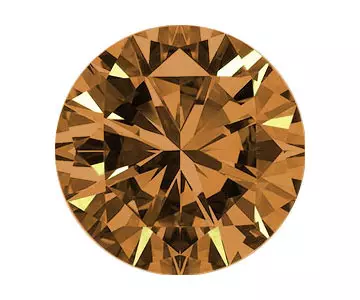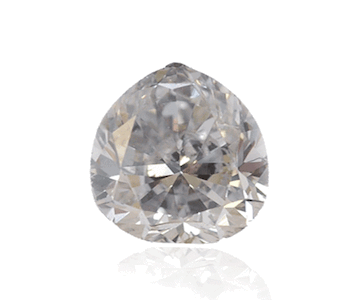GREEN DIAMONDS
Colored diamonds have a special allure, and rare natural color green diamonds may be the most intriguing of them all.
The green color in a diamond is the result of exposure to radiation. The source of the radiation can be naturally occurring or performed in a laboratory. Natural radiation is the result of the diamond being exposed to radioactive uranium from rocks near the earth’s surface. Artificial irradiation is achieved in a lab using either a linear accelerator (called a linac), gamma rays or a nuclear reactor.
The most famous natural-color green diamond is considered by many to be the Dresden Green – the largest-known natural green diamond weighing approximately 41 carats.
BLUE DIAMONDS
Blue diamonds are extremely rare, exquisitely beautiful, and rich in lore. This special combination has made them coveted by diamond lovers and jewelry connoisseurs.
How rare are blue diamonds? To find that glittering needle in the haystack, tons of ore have to be unearthed. And when a blue diamond is found, you can imagine the excitement it causes.The presence of boron impurities is often responsible for the color of natural blue diamonds . However, their color can also be caused by radiation exposure or associated with hydrogen. Blue diamonds naturally colored by exposure to radiation are usually described as green-Blue ,where as those with color that is associated with hydrogen are described as gray-violet to gray blue. Blue diamonds were first found in India and were brought to the West by gem dealer Jean-Baptiste Tavernier in the 17th century.
PINK DIAMONDS
Natural pink diamonds can be found in Brazil, Russia, Siberia, South Africa, Tanzania and Canada. However, the majority of these breathtaking stones hail from the Argyle Mine in Australia.Their scarcity and stunning beauty make these colored diamonds spectacular additions to any collection. Not to mention, they are highly valuable. In fact, according to The Argyle Diamond Mine, a pink diamond can cost 20 times the price of its white equivalent .
As with other colored diamonds, pink diamonds can be graded faint, very light, light, fancy light, fancy intense, fancy deep and fancy vivid. And like other hues, the stronger the color, the higher the price tag.
BROWN DIAMONDS
Brown diamonds are popular due in large part to positive marketing campaigns and attractive jewelry designs which can make a big statement. Naturally colored diamonds are rare. Comparatively speaking, brown diamonds are more affordable than pink, yellow, and blue diamonds, making them more accessible to many consumers.
The color in natural brown diamonds is caused by internal parallel brown grain lines due to distortion of the crystal lattice (arrangement of molecules).
In the 1980s, when advertisers started marketing brown diamonds from Australia’s Argyle mine. . Evocative color names like champagne, cognac, and chocolate, used in place of brown, were colorful descriptions that conjured appealing images. When chic design houses started incorporating them into their designs, it was a sure sign that they had arrived.
YELLOW DIAMONDS
If you love yellow diamonds, you’re not alone. Diamond connoisseurs spend millions on these stunning gemstones.Yellow diamonds were rarely seen until their discovery in South Africa in the late 1860s. They were so rare, in fact, that the famed gem merchant who found the Hope Diamond, Jean-Baptiste Tavernier (1605 – 1689), thought them noteworthy enough to mention seeing a 137.27 ct yellow diamond that he variously called “Florentine,” the “Austrian Yellow,” and the “Grand Duke of Tuscany.”
Yellow diamonds are considered to be a colored diamond and graded as “Fancy” when they fall outside the D-to-Z range (colorless to light-yellow). A Fancy grade means that the yellow diamond must have more color than the Z masterstone. The GIA Colored Diamond Grading System assigns yellow diamonds one of six color grades: Fancy Light, Fancy, Fancy Dark, Fancy Deep, Fancy Intense, and Fancy Vivid.
ORANGE DIAMONDS
Most orange diamonds are found in one of two places: the Argyle mine in Australia or South Africa.
What gives these stones their unique hue is the presence of nitrogen - which is the same element responsible for the color in yellow diamonds. According to the Natural Colored Diamond Association, nitrogen atoms must be grouped in a hyper-specific way while the diamond is forming. When they are situated in this particular arrangement, they absorb blue and some yellow light, thus producing an orange appearance.
Typically these modifying colors are brown, yellow or pink (in which the orange is the secondary color). If the stone's color is less than 25 percent orange, it will be deemed "orangy" instead. Orangy diamonds, diamonds that the orange color is secondary, are not difficult to come by in the market, but orange diamonds are highly uncommon.
RED DIAMONDS
Diamonds are prized around the world for their rarity. A gem-quality diamond is already one of the most rare items found in nature. Of all colored diamonds, one color in particular is especially rare: a predominantly red diamond.
“Predominantly red” means that red is the primary color with no secondary hues (like purple). In fact, red diamonds are so rare, that GIA records show that over a 30 year period from 1957 to 1987 there was no mention of a GIA lab report issued for a diamond with “red” as the only descriptive term.That’s a rather remarkable statement considering the number of diamonds GIA’s nine global laboratories grade each year, and that GIA has graded many of the world’s most famous colored diamonds.The Hancock Red is one of the most famous red diamonds. At the time of its sale in 1987 it was the most expensive per-carat gemstone ever sold at auction. The hammer came down at $880,000—a remarkable $926,315 per carat, eight times its pre-sale estimate.
GRAY DIAMONDS
Being a neutral gray color fancy diamond are considered sophisticated, chic and elegant.It is no surprise that with the increasing demand for fancy colored diamonds the increased demand for these rare gray diamonds followed.When most people think of natural color diamonds yellow and pink come to mind and not grays - but this is their advantage when it comes to their pricing…When describing the gray colored diamond the description is usually of smoky or cloudy gray to the lighter gray shades fancy light gray, steel gray and metallic gray to the fancy gray and graphite to the dark gray diamonds. But the options don't end there. It is true that the gray color is often in pure form (more common than other colored diamonds), but it can also come with secondary color modifiers. The most popular combinations being bluish gray and violet gray – which are vastly more expensive than regular gray (but also vastly cheaper than blue or violet) and also yellowish or greenish gray which are cheaper and also commoner.
BLACK DIAMONDS
Natural color black diamonds owe their color to an overabundance of very dark inclusions. These inclusions are typically microscopic concentrations of graphite, magnetite, hematite or native Fe (iron). Treated color black diamonds can be irradiated so they appear black but they’re actually a very dark green color or they can be subjected to low pressure, high-temperature annealing which induces large-scale graphitization within surface-reaching fractures.
Natural color black diamonds are notoriously difficult to cut and polish. They are hard to polish because of numerous graphite inclusions and surface-reaching breaks that can cause pits. Because of this, natural color black diamonds tend to chip or break apart on the cutting wheel. They can take much longer to facet than colorless diamonds and the finished gems are more easily damaged. Sometimes transparent areas are surrounded by opaque zones caused by dense concentrations of dark inclusions; however, a homogenous black color is preferred. Sellers should always disclose when a gemstone has been treated but with black diamonds, assume that most of them are treated.

Fancy Color Diamonds
In diamonds, rarity equals value. With diamonds in the normal range, value is based on the absence of color, because colorless diamonds are the rarest. With fancy color diamonds—the ones outside the normal color range—the rarest and most valuable colors are saturated pinks, blues, and greens. In all cases, even very slight color differences can have a big impact on value.
Compared to fancy yellows and browns, diamonds with a noticeable hint of any other hue are considerably more rare. Even in light tones and weak saturation, as long as they show color in the face-up position, they qualify as fancy colors. Red, green, and blue diamonds with medium to dark tones and moderate saturations are extremely rare.
Grading fancy color diamonds is complex and specialized, and it takes highly trained laboratory graders to complete the process accurately.
The GIA system for color-grading fancy color diamonds is designed to accommodate the fact that not all colored diamonds have the same depth of color. For example, yellow diamonds occur in a wide range of saturations, while blue diamonds do not.
Technology Is Changing jewellery Design
Something remarkable happened to jewelry design and manufacturing in the past few years – it underwent a technological revolution powered by Computer-Aided Design (CAD) software and Computer-Aided Manufacturing (CAM) hardware, such as 3D printers.Before these technological advances, designers began by sketching a piece of jewelry, and when it was finalized, they used pencil, pen, or watercolor paint to create a rendering of the design . Jewelers then used the drawing to either hand-fabricate the piece out of metal or carve it out of wax. The wax model was encased in plaster and placed in an oven. Once the wax was burned away, molten precious metal, like gold or platinum, was poured into the cavity left by the wax . After it cooled, the plaster was broken apart and the piece of jewelry was finished.
Designers still use many of the steps in this process, especially when making high-end pieces. And despite all the new CAD and CAM technology, jewelry designers still need to have good engineering skills – like knowing how strong prongs have to be to hold a gemstone in place .
Much of today’s jewelry is now designed using CAD software. The allure is understandable: CAD allows designers to work more quickly, easily create variations of a design theme, and “cut and paste” motifs into different projects more quickly than if drawn by hand. Designers can also save favorite functional or decorative elements in a library and use them in future pieces.The more complex a piece of jewelry is, the more difficult it is to design . Another way that CAD software is changing design is that it allows designers to zoom in so they can add detail to very small areas of a piece.
Free Shipping
Lifetime
Guarantee
Complementary
Valuation
Conflict Free
Diamonds

30 Day Money Back
Guarantee
DG & Co. Guarantees
Free Shipping
Lifetime
Guarantee
Complementary
Valuation
Conflict Free
Diamonds

30 Day Money Back
Guarantee
Contact Us











